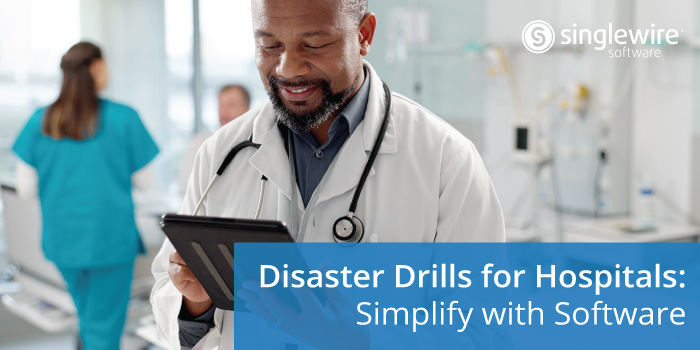Enhancing Hospital Disaster Preparedness
Ensuring the safety and security of patients, staff, and visitors within healthcare institutions is a top priority for hospital administrators and stakeholders. With the potential for various disasters such as fires, natural calamities, or medical emergencies, hospitals must conduct regular disaster drills to prepare everyone for potential emergencies. These drills familiarize individuals with emergency procedures and help identify areas for improvement in the hospital’s disaster response protocols. However, managing and conducting these drills can be a daunting task. In this post, we will explore the importance of conducting disaster drills for hospitals, the challenges associated with managing them, and how software tools can simplify the process.
The Importance of Disaster Drills for Hospitals
Disaster drills for hospitals are crucial for preparing medical staff and employees to respond effectively in emergency situations. Healthcare institutions must equip their staff with tools to handle a wide range of disasters, ranging from mass casualty incidents to infectious disease outbreaks and severe weather that can impact operations. By conducting regular drills, hospitals can ensure that their staff know how to respond swiftly and efficiently in high-pressure situations, reducing risks to themselves and enabling the hospital to continue delivering excellent patient care. Disaster drills provide an opportunity to practice critical procedures, test the effectiveness of emergency communication systems, and identify areas for improvement in disaster response plans.
Challenges in Conducting Disaster Drills for Hospitals
While the importance of disaster drills for hospitals is evident, there are significant challenges associated with managing them effectively:
- Manual Planning and Documentation: Many hospitals rely on manual methods such as pen and paper to plan, schedule, and document disaster drills. This approach is time-consuming and prone to errors, making it difficult to keep track of drill schedules, participants, and outcomes.
- Limited Coordination Across Facilities: Hospitals with multiple buildings or facilities often face difficulties coordinating and managing disaster drills across different locations. The lack of a centralized system hinders effective planning and communication, making the process cumbersome and disjointed.
- Compliance Tracking and Reporting: Organizations must demonstrate compliance with various regulations and accreditation requirements, including a disaster drill. However, without a centralized system in place, it can be challenging to maintain accurate records of completed drills, the date and time of each drill, and the participation of staff members.
- Ensuring Comprehensive Execution: In the absence of proper guidance and documentation, hospitals may overlook critical steps or procedures during disaster drills. This can compromise the effectiveness of response measures and hinder preparedness for real-life disasters.
Simplifying the Process with Software Solutions
To address these challenges, hospitals can leverage software tools designed specifically to simplify the management of disaster drills:
- Centralized Planning and Scheduling: Disaster drill management software allows administrators to centrally plan and schedule drills across multiple hospital facilities. This streamlines the logistics and ensures consistent execution of drills.
- Efficient Execution: With step-by-step instructions and task checklists built into the software, officials can conduct a disaster drill in an organized and efficient manner. The software guides participants through the required actions, reducing the chances of missing critical steps.
- Automated Documentation: Software tools can automatically generate digital records of completed drills, capturing essential details such as drill dates, participants, and outcomes. These records facilitate compliance tracking and reporting, saving time and effort for hospital administrators.
- Integration of Communication Systems: During disaster drills, hospitals can leverage software solutions to integrate their communication systems. This enables administrators to broadcast messages, alerts, and instructions to all staff members simultaneously, mirroring real-life scenarios and enhancing familiarity with emergency communication procedures.
A disaster drill is crucial for preparing staff to respond effectively to emergencies. By addressing the challenges associated with managing disaster drills and utilizing tools like a disaster drill management software, hospitals can simplify the process, ensure compliance, and create a safer environment for patients and staff. Additionally, integrating communication systems into drills enhances preparedness and familiarizes individuals with emergency communication procedures, ultimately leading to better outcomes during real-life disaster situations in healthcare settings. To learn more about how software tools can streamline disaster drills and enhance overall hospital safety, visit our Healthcare page.
